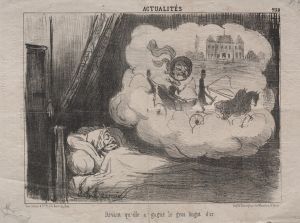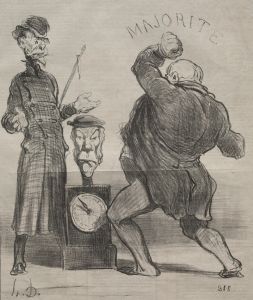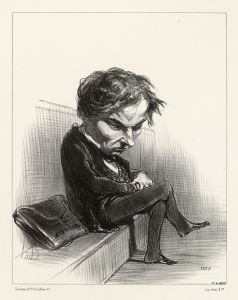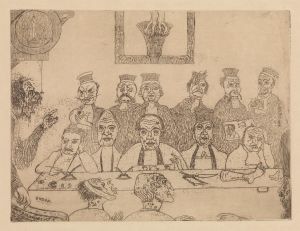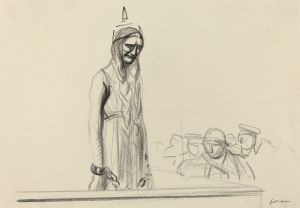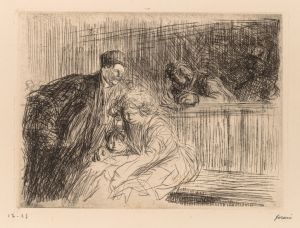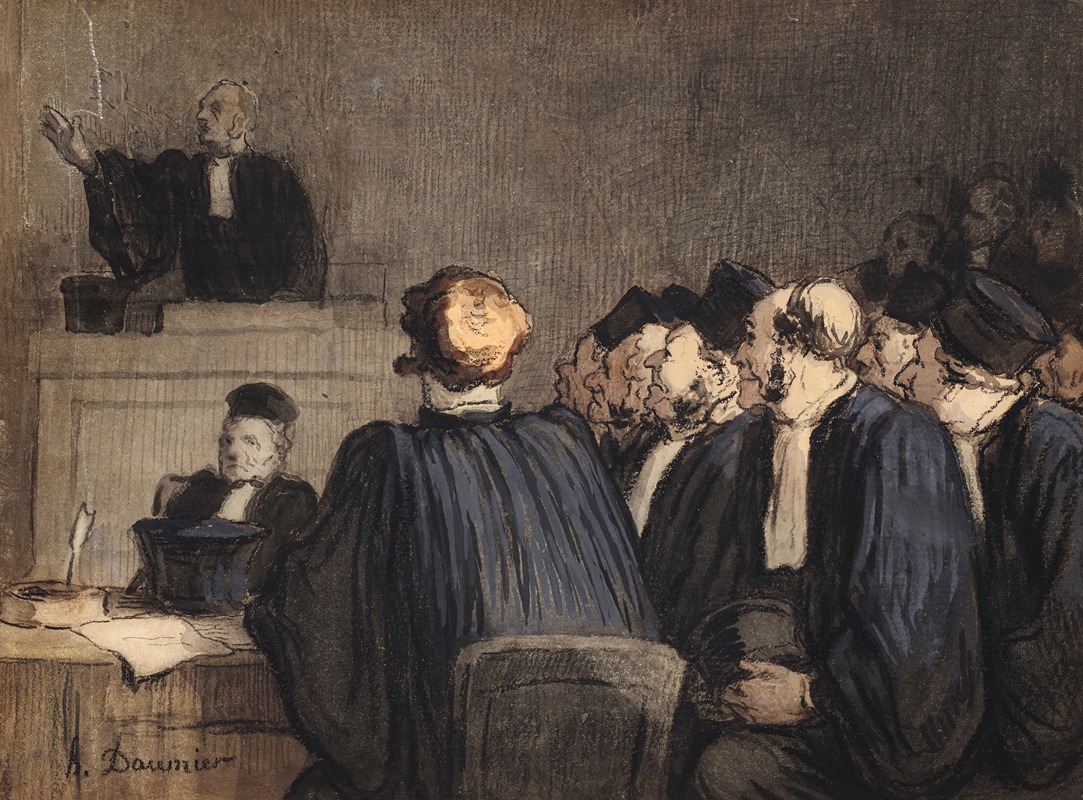
Scène de tribunal
A hand-painted replica of Honoré Daumier’s masterpiece Scène de tribunal, meticulously crafted by professional artists to capture the true essence of the original. Each piece is created with museum-quality canvas and rare mineral pigments, carefully painted by experienced artists with delicate brushstrokes and rich, layered colors to perfectly recreate the texture of the original artwork. Unlike machine-printed reproductions, this hand-painted version brings the painting to life, infused with the artist’s emotions and skill in every stroke. Whether for personal collection or home decoration, it instantly elevates the artistic atmosphere of any space.
Honoré Daumier was a prominent French artist known for his caricatures, paintings, and sculptures, often focusing on social and political themes. One of his notable works is "Scène de tribunal," which translates to "Courtroom Scene." This artwork is a part of Daumier's extensive exploration of the legal system and its participants, a subject he frequently depicted with a critical eye.
Daumier was born in 1808 in Marseille, France, and moved to Paris with his family in 1816. He began his artistic career as a lithographer and gained recognition for his satirical caricatures published in various newspapers. His work often critiqued the political and social issues of his time, including the justice system, which he viewed as flawed and biased.
"Scène de tribunal" is a reflection of Daumier's interest in the courtroom as a microcosm of society. The painting captures the drama and tension of a legal proceeding, focusing on the interactions between the judge, lawyers, defendants, and spectators. Daumier's courtroom scenes are characterized by their expressive figures and dynamic compositions, which convey the emotional intensity of the legal process.
Daumier's approach to depicting the courtroom was influenced by his own experiences and observations. He spent time attending trials and sketching the people and proceedings he witnessed. This firsthand observation allowed him to capture the nuances of human behavior and the often absurd nature of legal rituals. His courtroom scenes are not just literal representations but also commentaries on the power dynamics and social hierarchies present in the judicial system.
In "Scène de tribunal," Daumier employs his signature style of exaggerated features and dramatic gestures to highlight the personalities and emotions of the characters. The figures are often depicted with exaggerated facial expressions and body language, emphasizing the theatricality of the courtroom setting. This stylistic choice serves to underscore the performative aspects of legal proceedings and the sometimes farcical nature of justice.
Daumier's work, including "Scène de tribunal," was part of a broader movement in 19th-century art that sought to address social issues and critique established institutions. His paintings and lithographs were influential in shaping public opinion and raising awareness about the injustices present in society. Despite facing censorship and legal challenges for his politically charged work, Daumier remained committed to using his art as a tool for social commentary.
Today, "Scène de tribunal" and other works by Daumier are celebrated for their artistic merit and their insightful critique of 19th-century French society. His ability to blend humor, empathy, and social criticism has earned him a lasting legacy as one of the most important artists of his time. Daumier's courtroom scenes continue to resonate with contemporary audiences, offering a timeless reflection on the complexities of justice and the human condition.








